Tyrosine Kinase
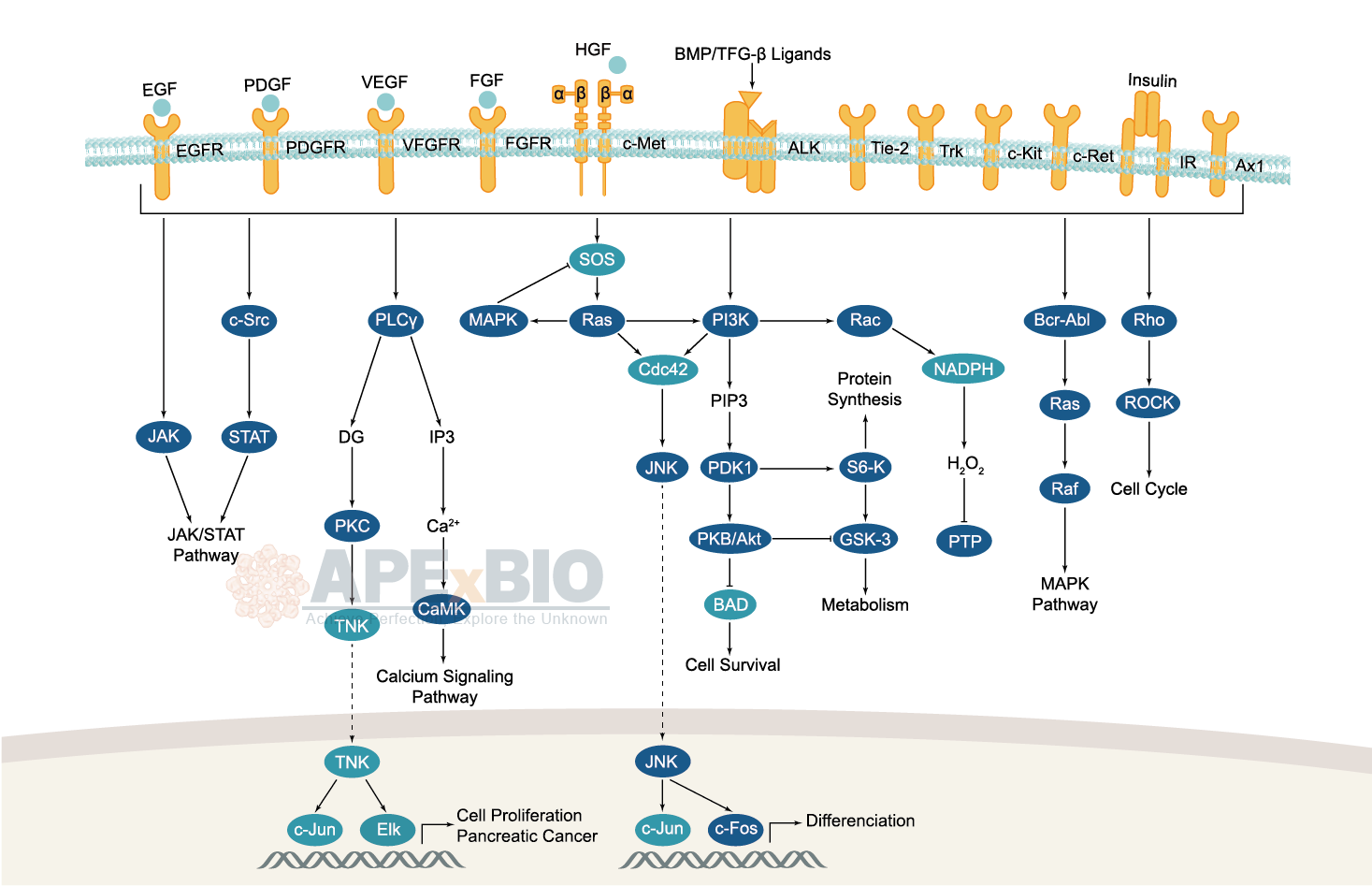
Receptor tyrosine kinases bind to extracellular ligands/growth factors, which promotes receptor dimerization and autophosphorylation of receptor tyrosine residues. This triggers a cascade of downstream events through phosphorylation of intracellular proteins that ultimately transduce the extracellular signal to the nucleus, causing changes in gene expression. Receptor tyrosine kinases include EGFR/ErbB, PDGFR, VEGFR, FGFR and MET subfamilies etc. Dysfunctions in tyrosine phosphorylation are linked to oncogenic transformation. In additions, various adaptor and effector proteins couple to carboxy-terminal of an active kinase. For instance, binding of the GRB2 adaptor protein activates EGFR and MAPK/ERK signaling.
Non-receptor tyrosine kinases involve many well-defined proteins (e.g. the Src family kinases, c-Abl, and Jak kinases) and other kinases which regulates cell growth and differentiation. For example, Src family kinases are curial for activating and inhibitory pathways in the innate immune response.
-
 A3503 IRAK inhibitor 4Target: IRAKSummary: IRAK inhibitor
A3503 IRAK inhibitor 4Target: IRAKSummary: IRAK inhibitor -
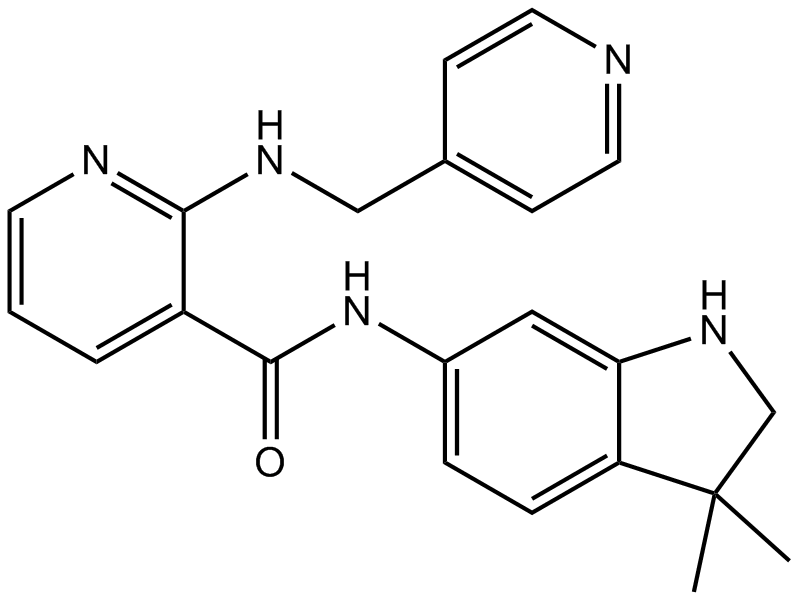 A3632 MotesanibTarget: VEGFRSummary: Inhibitor of Flk-1/Flt-4/PDGFR-/c-Kit
A3632 MotesanibTarget: VEGFRSummary: Inhibitor of Flk-1/Flt-4/PDGFR-/c-Kit -
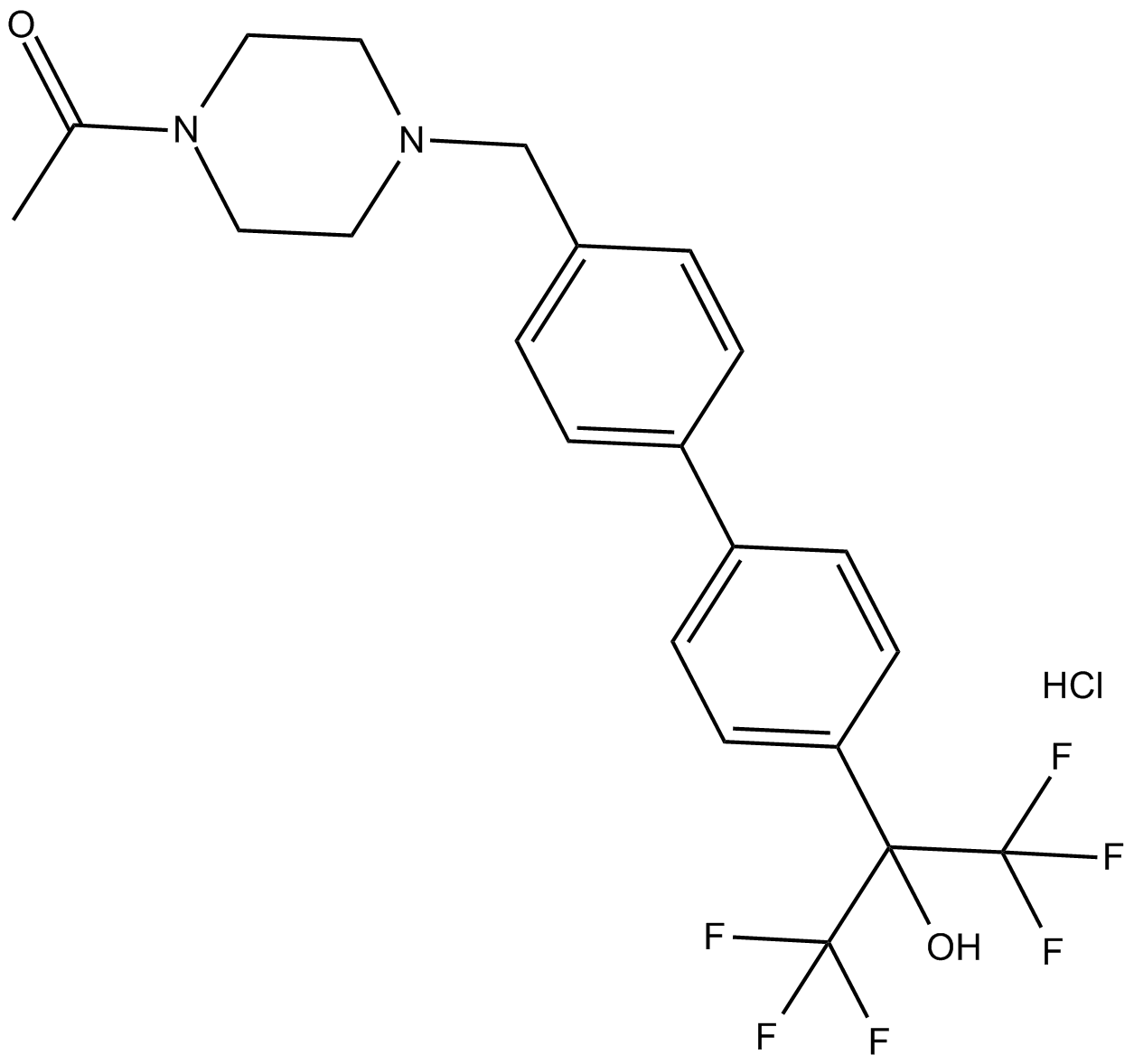 C3485 SR 1555 (hydrochloride)Summary: inverse agonist of RORγ
C3485 SR 1555 (hydrochloride)Summary: inverse agonist of RORγ -
 C4541 LDN-211904Summary: inhibitor of erythropoietin-producing hepatocellular carcinoma (Eph) receptors
C4541 LDN-211904Summary: inhibitor of erythropoietin-producing hepatocellular carcinoma (Eph) receptors -
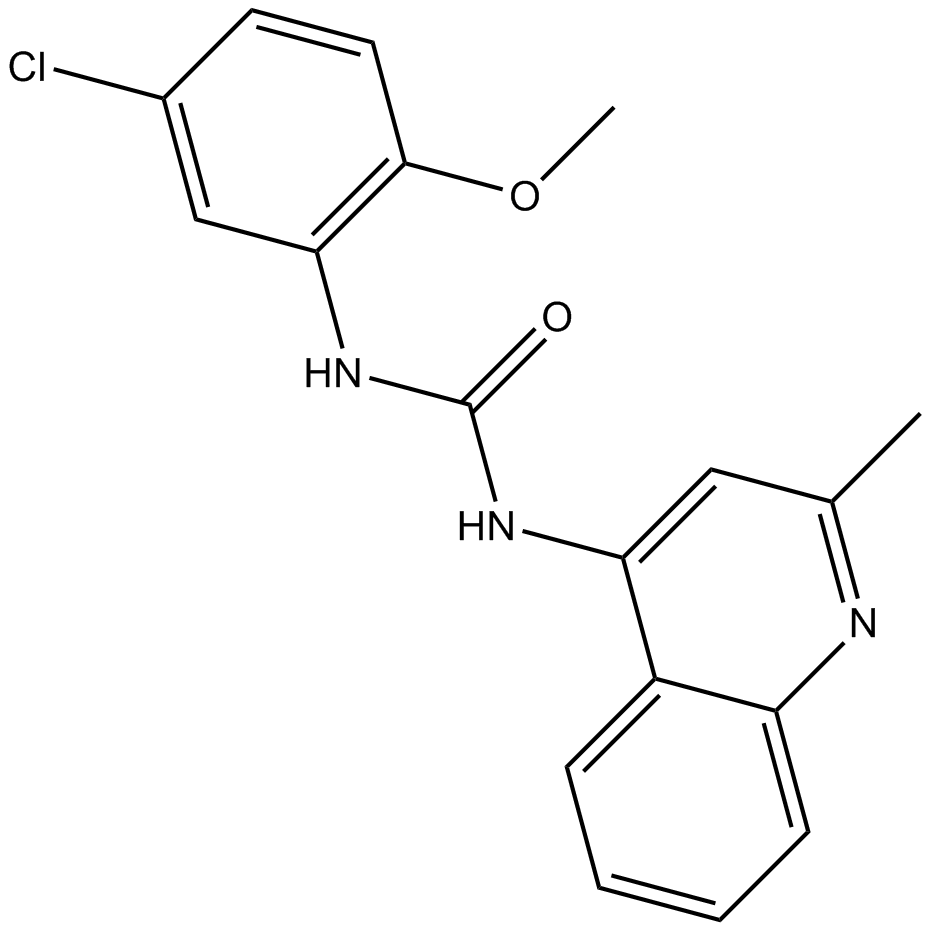 A2033 PQ 4011 CitationSummary: IGF1R inhibitor,potent and cell-permeable
A2033 PQ 4011 CitationSummary: IGF1R inhibitor,potent and cell-permeable -
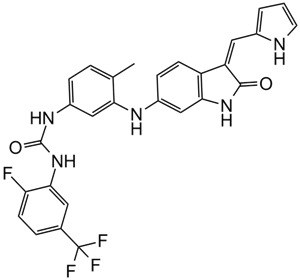 A8303 GNF-5837Target: Trk ReceptorsSummary: Pan-Trk inhibitor
A8303 GNF-5837Target: Trk ReceptorsSummary: Pan-Trk inhibitor -
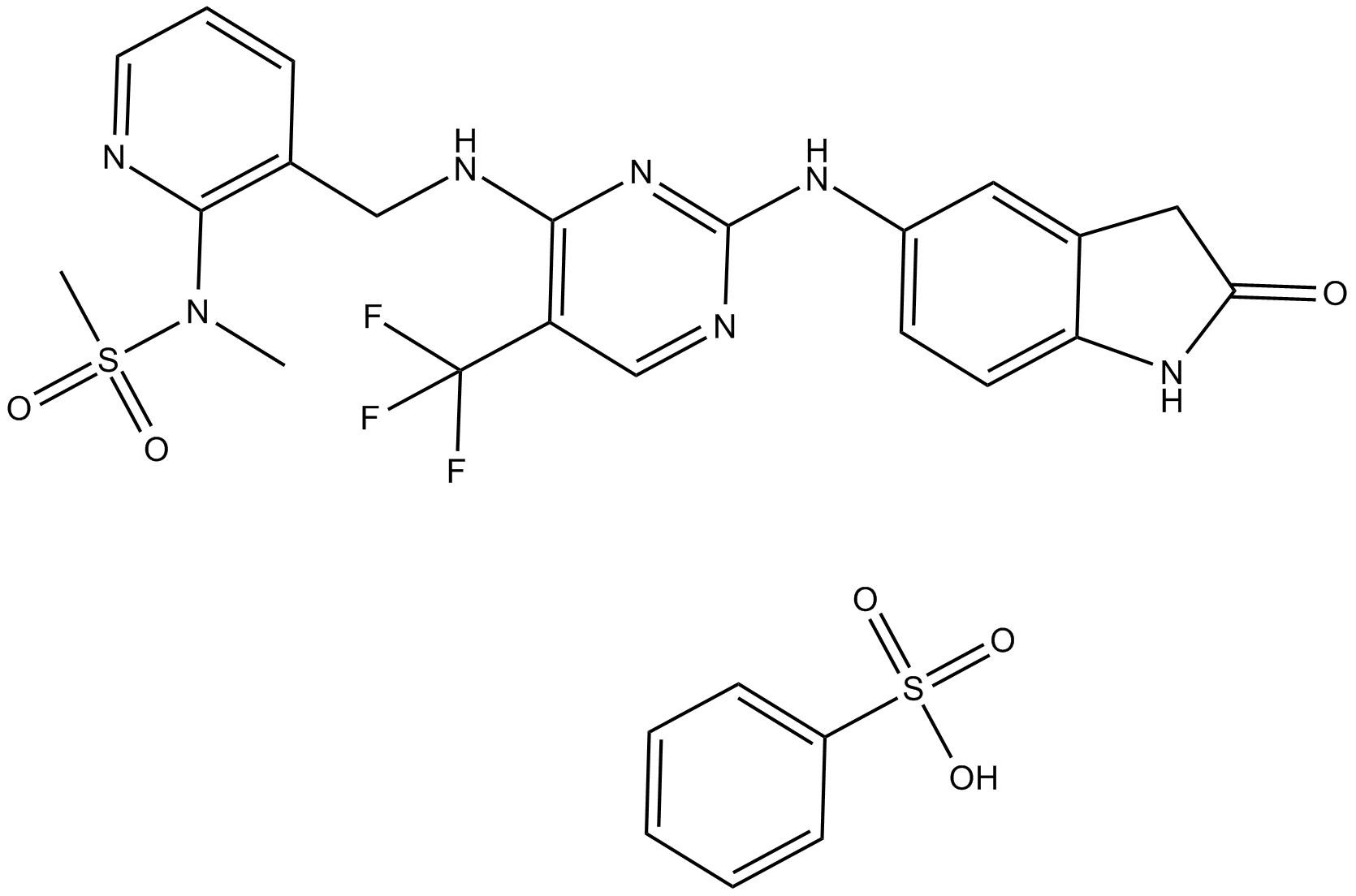 A8320 PF-00562271Target: FAK|Pyk2Summary: FAK/Pyk2 inhibitor,potent and ATP-competitive
A8320 PF-00562271Target: FAK|Pyk2Summary: FAK/Pyk2 inhibitor,potent and ATP-competitive -
 A8329 R42829 CitationSummary: Selective Axl inhibitor
A8329 R42829 CitationSummary: Selective Axl inhibitor -
 B3605 GNE-7915Target: LRRK2Summary: Potent and selective LRRK2 inhibitor
B3605 GNE-7915Target: LRRK2Summary: Potent and selective LRRK2 inhibitor -
 B6869 Demethylasterriquinone B1Summary: insulin receptor (IR) activator
B6869 Demethylasterriquinone B1Summary: insulin receptor (IR) activator

